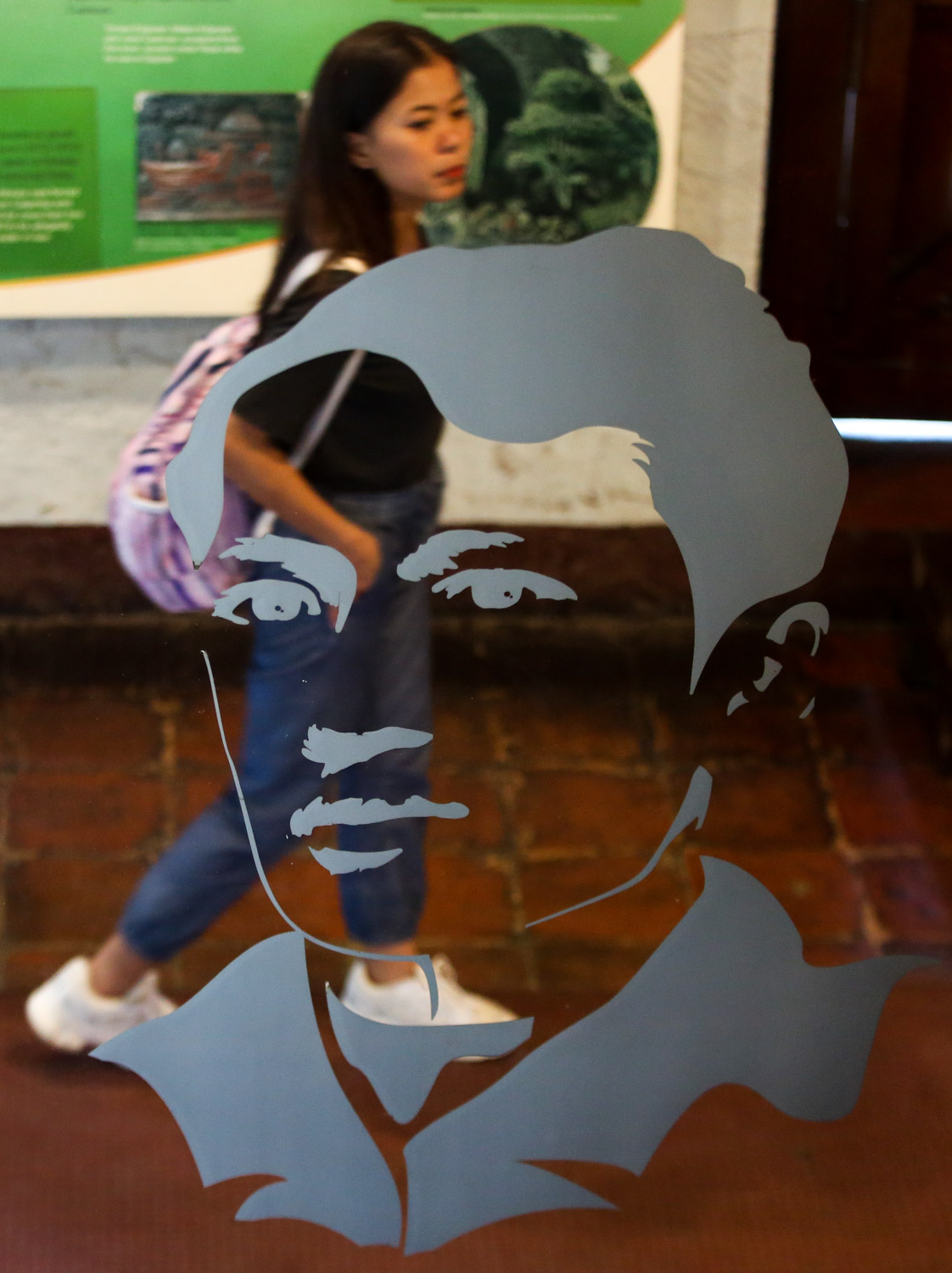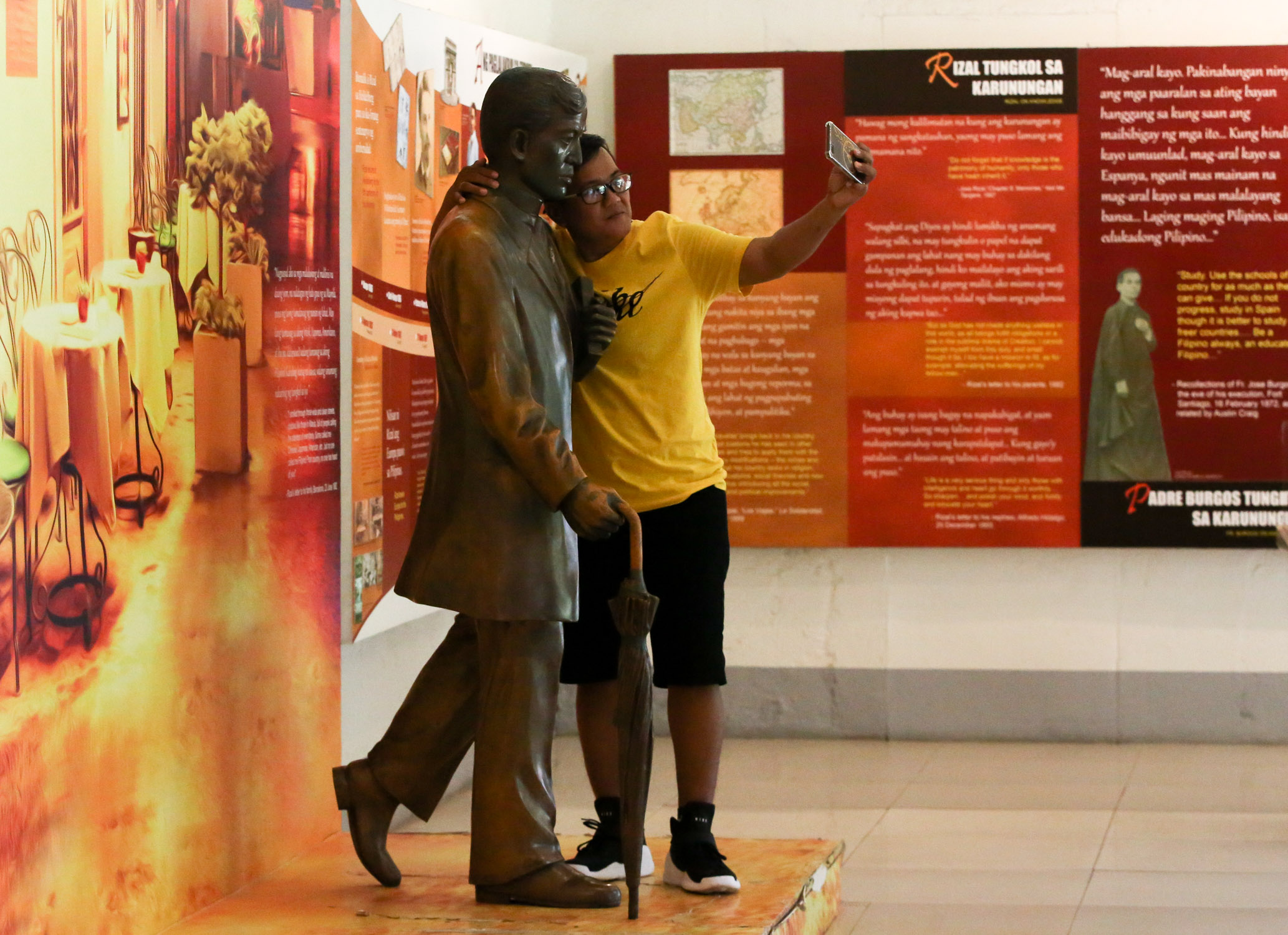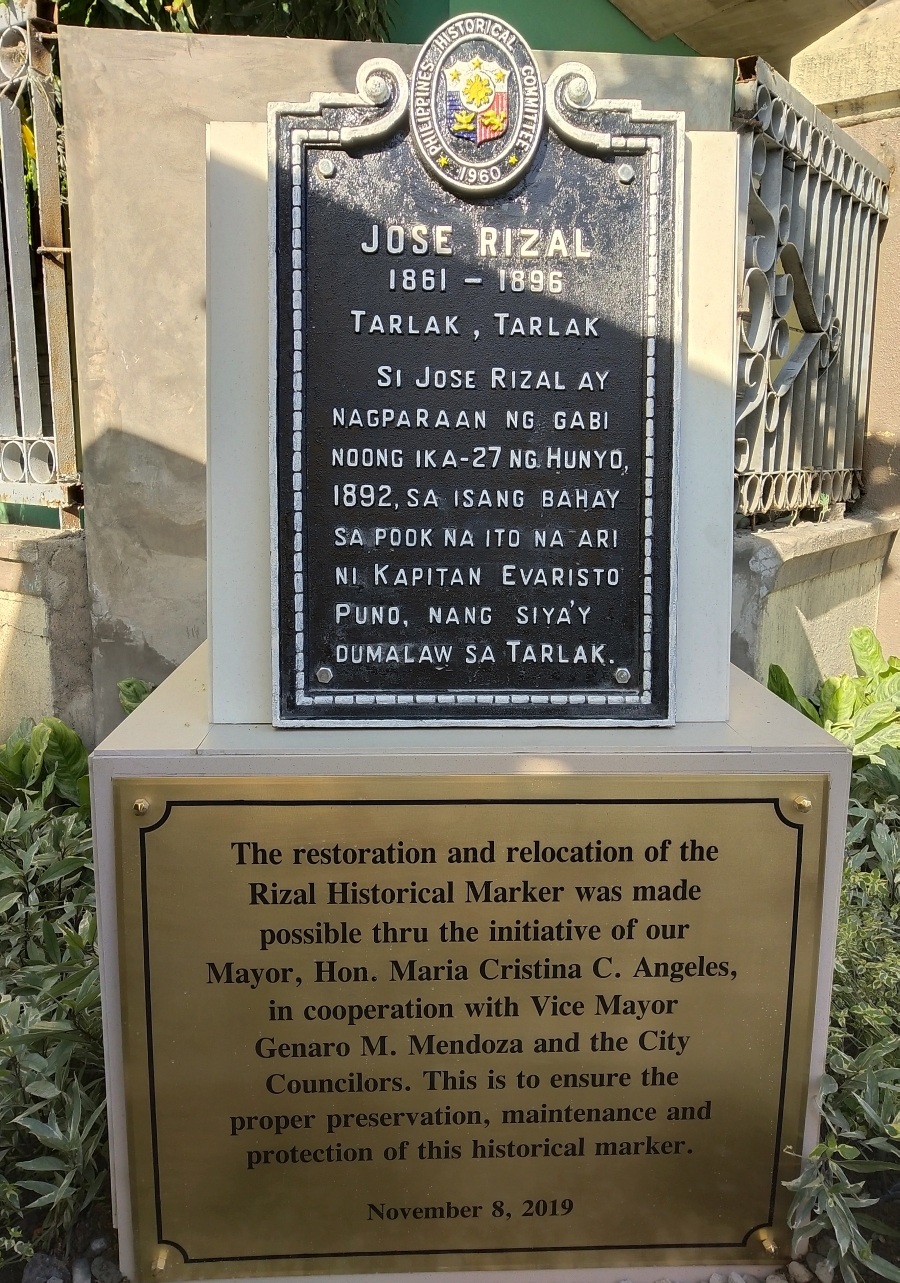Tarlac’s role cited in Rizal’s quest for reforms, nationhood

A HERO AT HOME AND ON THE MOVE A visitor walks past an image of Dr. Jose Rizal at his ancestral home in Calamba, Laguna, now a shrine in honor of the national hero whose 123rd death anniversary is bein gcommemorated on Monday. INQUIRER PHOTO/LYN RILLON
TARLAC CITY—Textbooks rarely emphasize the role of Tarlac province in establishing the national reform movement advocated by Dr. Jose Rizal before he was arrested by the Spanish colonial government.
Rizal visited friends in Tarlac in 1892, an event that is memorialized by a marker restored on Nov. 8.
The national hero intended to visit friends in Central Luzon who supported his crusade for governmental reforms in order to end Spanish abuses.
The marker says Rizal stopped by the house of Capt. Evaristo Puno on June 27, 1892, after dropping by Pampanga province, arriving on a train from Manila’s Tutuban station in what is now Pangasinan’s Dagupan City.
Days later, Rizal helped form the movement La Liga Filipina.
“The event in Tarlac is important through this marker because it reminds Filipinos that Rizal, through the constitution of the La Liga, wanted to have a nation of our own [that] is based on mutual protection [and] the unity of the whole archipelago,” said historian Michael Charleston “Xiao” Chua.
“[La Liga] was actually a prescription for how we should be and when we should become independent,” he added.
Katipunan
La Liga counted among its members Apolinario Mabini and Andres Bonifacio, who initiated the Philippine Revolution after forming the Katipunan.
“What will happen is that the La Liga Filipina will not prosper. Three days after its establishment on July 3, [Rizal] was arrested and banished to Dapitan. Bonifacio and his friends will then create the Katipunan,” Chua said.
In Dapitan in what is now Zamboanga del Norte, Rizal “created a semblance of what he wanted to do, which is basically… social entrepreneurship and progressive education,” Chua added.
Rizal was executed at Bagumbayan (present-day Luneta or Rizal Park) in Manila on Dec. 30, 1896, for rebellion after being linked to the Katipunan uprising.
Some Filipino scholars still believe Rizal did not deserve to be the national hero partly because of the assumption that he continued to recognize the country as a Spanish province, according to Chua.

PHOTO OP WITH PEPE Ever relevant and relatable, Dr. Jose Rizal—or at least his life-size statue—makes for a perfect selfie buddy at the shrine dedicated to the national hero at his hometown of Calamba, Laguna. Filipinos are marking the 123rd anniversary of the Great Malayan’s martyrdom on Monday. —LYN RILLON
Nationalism
“That’s not true. La Liga’s constitution and bylaws outline the process for gradually converting the country from a Spanish vassal to a nation to which the Tarlac marker testifies,” he said.
Chua said Rizal organized La Liga by linking together the ilustrados (19th century Filipinos who were educated) of the different provinces of Central Luzon, including Tarlac.
Rizal met Don Cecilio and Don Tiburcio Hilario in San Fernando, Pampanga. They participated in the Pampanga leg of the revolution.
Rizal then sought out Procopio Hilario in Tarlac but failed to see him, so he then met Puno. Rizal was introduced to Hilario, who became a revolutionary leader, through Pampanga-born Valentin Ventura.
Ventura is reputed to have financed the publication of Rizal’s second novel, “El filibusterismo.”

In Tarlac province, a restored historical marker unveiled on Nov.8 recounts a visit made by Rizal in June 1892. —CONTRIBUTED PHOTO
Love connection
Many accounts about Rizal’s Tarlac trip allude to his romance with Tarlac-born Leonor Rivera, who some say was the hero’s inspiration for Maria Clara in “Noli me tangere.”
Rizal pursued his medical degree at the University of Santo Tomas and stayed in Casa Tomasina, which was run by Antonio Rivera, the father of Leonor who was then studying in La Concordia College.
Rizal met Leonor in 1880 when she was 13 years old. Born in Camiling town, Leonor was not yet 15 when she and Rizal got engaged.
In the book “Rizal Without the Overcoat’’ by Ambeth Ocampo, Leonor used “Taimis” as a code word in order to conceal their affair from her parents and friends. They corresponded for six years but never saw each other after Rizal left the country in 1882.
In 1890, Leonor married railroad engineer Charles Henry Kipping, an Englishman who worked on the Manila-Dagupan Railway. Rizal was devastated upon learning about her marriage.But in his quest to initiate reforms, Rizal took the “Dagupan train for the first time which was engineered by the one who stole his love,” Chua said.